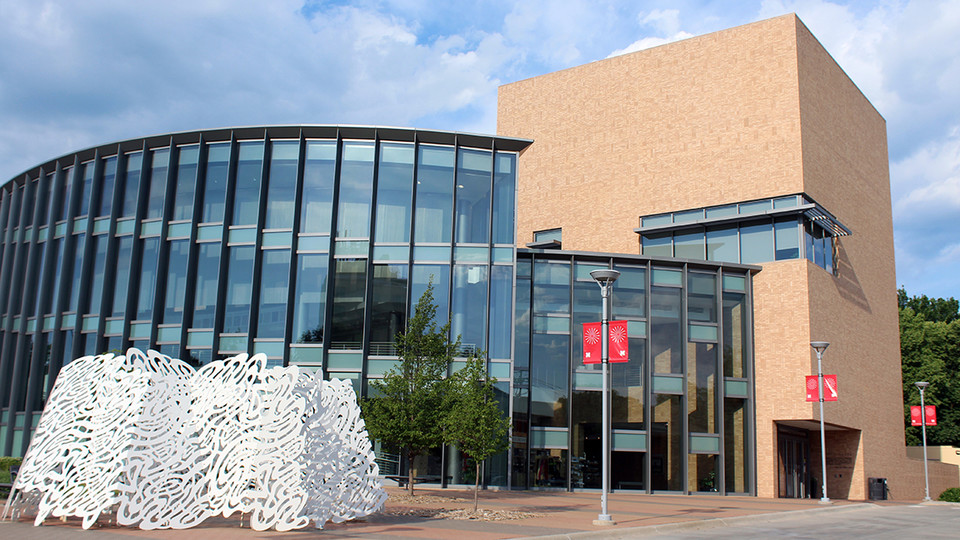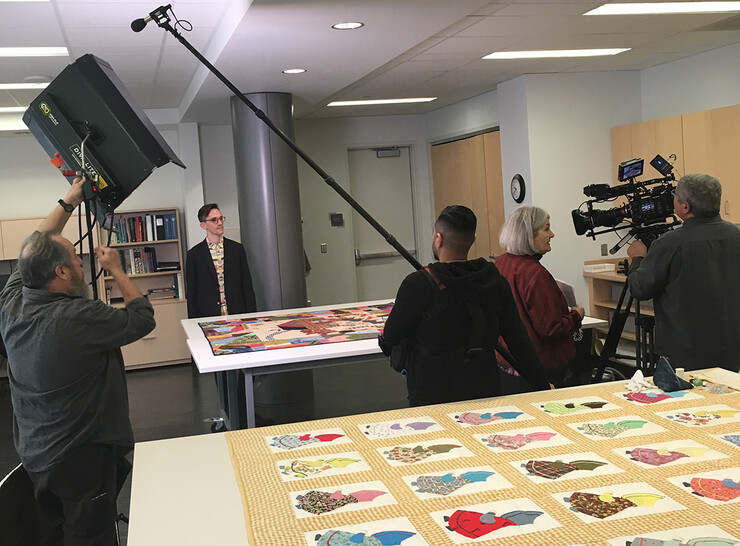· 4 min read
PBS’ ‘Craft in America’ to feature International Quilt Museum

“Quilts,” a new episode of PBS’ “Craft in America” program will feature the University of Nebraska–Lincoln’s International Quilt Museum. The show broadcasts at 8 p.m. Dec. 27 on NET.
The Peabody Award-winning documentary series, “Craft in America,” discovers the beauty, significance and relevance of handmade objects and the artists who make them. For more than a decade, the series has taken viewers on cultural journeys across this nation, honoring the multiplicity of traditions that have come to define our country.
In this episode Carolyn Ducey, curator of collections, and Leslie C. Levy, executive director, introduce the International Quilt Museum, where the mission is to build a global collection and audience that celebrate the cultural and artistic significance of quilts.
“We are thrilled to partner with ‘Craft in America’ to help tell the story of American quilts,” Levy said. “This episode truly captures the spirit and heart of our rich quiltmaking tradition. We’re also excited to share our collection, exhibitions and research with a national audience through the lens of this captivating episode.”
The “Craft in America” crew visited the museum in March to film interviews and view quilts from the collection.
In this episode, viewers meet contemporary masters of this traditional art form.
Historian and storyteller Ken Burns, a passionate quilt collector, who appears in the episode, calls quilts the “simplest and most authentic expression of who we are as a people.” The International Quilt Museum recently exhibited 28 quilts from Burns’ American quilt collection. He views quilts as an essential building block of culture.
“This is what human beings are required to do, to take raw materials and transform them into something greater than the sum of their parts,” Burns said. “And that’s what a quilt is, that’s what art is.”
The episode also features these contemporary artists and makers:
Susan Hudson, a Navajo/Diné artist from Sheep Springs, New Mexico, who was taught to sew by her mother who was forced to sew at an “assimilation” boarding school. Hudson’s pictorial quilts honor her ancestors and the proud history of the Navajo people using a crossover style inspired by Ledger art. Recounting history through her ledger quilts has made Hudson an activist storyteller, chronicling the hardships endured by her ancestors.
Victoria Findlay Wolfe has a fine art degree in painting but found her life’s passion in quilt making. Now a New York-based international award-winning quilter, fabric designer, teacher, author and lecturer, Findlay Wolfe is known for making quilts that look difficult to make, then teaching quilters to make them.
Michael A. Cummings is a nationally recognized quilter who lives and works in the historic Sugar Hill neighborhood of New York. Self-taught, Cummings brought years of painting and collage skills to his quilt making. Inspired by jazz and working in the narrative tradition, Cummings and his sewing machine tell stories of the African American experience across historical, cultural, philosophical and mythical realms.
Judith Content uses inspiration from nature and a Japanese resist dye technique, arashi shibori, to create glorious abstract wall quilts in her Palo Alto, California, studio. Content dyes then composes fabric into an abstract kimono form and uses her sewing machine as a drawing tool to achieve an evanescent visual haiku that communicates to viewers both emotionally and intellectually. These art quilts, made to be viewed on walls rather than placed on beds, expand both the definition of the quilt and its place in the art world.
Learn more about the “Craft in America” series and view additional video clips.








